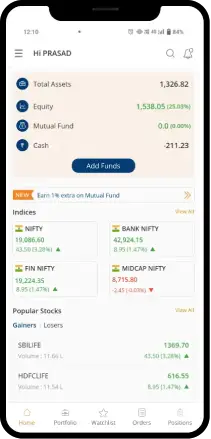Features of Close Ended Mutual Funds
-
Close ended funds are launched with an aim of raising capital for the first time and their NAV is typically set at ₹10.
-
Close ended schemes can issue only a fixed number of units. New units cannot be created.
-
Market price of units of close ended funds depends on the demand and supply factors playing out in the secondary market.
-
Post NFO closure, close ended funds are traded on the secondary market amidst limited liquidity.
Benefits of Close Ended
Mutual Funds

-
Stability for investors and fund managers
Investors cannot sell units of close ended funds before maturity, helping eliminate redemption pressures. This is beneficial for investors as the fund manager gets enough freedom, time, and a set asset base to execute their investment strategy. -
Transparent
Close ended funds are traded on stock exchanges like stocks. Their worth (NAV) is decided by demand and supply factors. If the demand remains high while the supply stays low, then huge profits can be made by selling units of close-ended funds.
pricing -
Two potential ways to make money
There are two ways to make money with close ended mutual funds – You can hold the units to enjoy profits produced by the fund on maturity or you can trade them on stock exchanges when the demand is high but supply is low, to make handsome profits. -
Ideal for lumpsum
Systematic Investment Plan is not allowed in close ended funds since they close for subscription after the offer period ends. Only lumpsum investment is permitted. This is perfect for experienced investors who want to time the market and invest at one go.
investment
Types of Close Ended Mutual Funds
Close ended funds can be both equity and debt. Within these asset classes, close-ended funds can be fixed maturity plans, capital protection fund and even small and micro-cap funds with fixed maturity date are treated as close ended funds.
-
1
Fixed maturity plans
FMPs invests the corpus in debt instruments which mature in line with the fund’s maturity date. This helps them reduce interest rate risks and is ideal for investors whose investment horizon matches with fund’s maturity.
-
2
Capital protection fund
Capital protection funds invest in both equity and debt. Debt portion is invested in fixed income securities (bonds). Equity portion consists of equity (stocks) and equity-related instruments. Debt portfolio protects the capital while equity generates capital appreciation.
Mutual Funds Calculator
Evaluate future value of your SIP and Lumpsum investments.
-
Investment Type
-
Monthly Investment
₹ -
Expected Returns Rate
% -
Time Period
yrs
Future value of your investment
₹ 0
Returns
-
Invested Amount
0
-
Estimated Returns
0
-
Select Scheme
-
Investment Type
-
Monthly Investment
₹ -
Time Period
Total of your Investment will be
₹ 0
Returns
-
Invested Amount
0
-
Estimated Returns
0
Taxation of Close Ended Mutual Funds
| Type of close ended fund | Holding period | Capital gains | Tax rate |
|---|---|---|---|
| Equity-oriented (more than 65% investment in equities) | Less than 12 months | Short term capital gains (STCG) | 15% |
| More than 12 months | Long term capital gains (LTCG) |
10% - on gains exceeding ₹1 lakh in a financial year Nil – If gains are less than ₹1 lakh in a financial year |
|
| Debt-oriented | Less than 36 months | Short term capital gains (STCG) | As per income tax slab |
| More than 36 months | Long term capital gains (LTCG) | 20% post indexation |
Here's what the world has to say
We bring simplicity and ease to investing, along with exceptional customer expereince that our user admire

“Mujhe m.Stock trading app use karne mei bohot accha lagta hai. Mei ye app sabko recommend karta hu aur future mei bhi karunga!”

“m.Stock share market trading app is ideal for investments. Easy to read dashboard & I can access it easily to check my portfolio.”

“The messages and initiation that I got at every step, is the best without any jargons. There were samples and screens that helped a lot.”

“A very intuitive platform. Barely took a few minutes to apply online and complete the KYC. 1-click order placement. Kudos m.Stock team!”

“m.Stock trading app itna simple ki koi bhi yeh app use kar sakte hai. Unke live market updates right moves lene me help karta he.”

“m.Stock trading app main apne dost ko bhi recommend kiya hu and even they are now happy traders! Zero brokerage is the best! Thank you m.Stock! ”
FAQs on Close Ended Mutual Funds
When a fund house introduces a new scheme with a fixed number of units, such funds are known as close ended mutual funds. These funds are launched through an NFO (New Fund Offer) and later traded like stocks. They have a fixed maturity date, making them ideal for investors with financial goals matching the fund’s maturity tenure. Also, since close ended funds do not facilitate systematic investment plan, they are ideal for investors with ready access to lumpsum capital.
Some of the examples of close ended mutual funds are capital protection funds, FMPs, diversified equity funds, international equity funds, taxable bond funds etc.
No, ETF and close ended funds are not the same. ETFs are continuously bought and sold on stock exchanges and do not have a fixed maturity date like close ended funds.
Power your investments with our smart trading platforms





